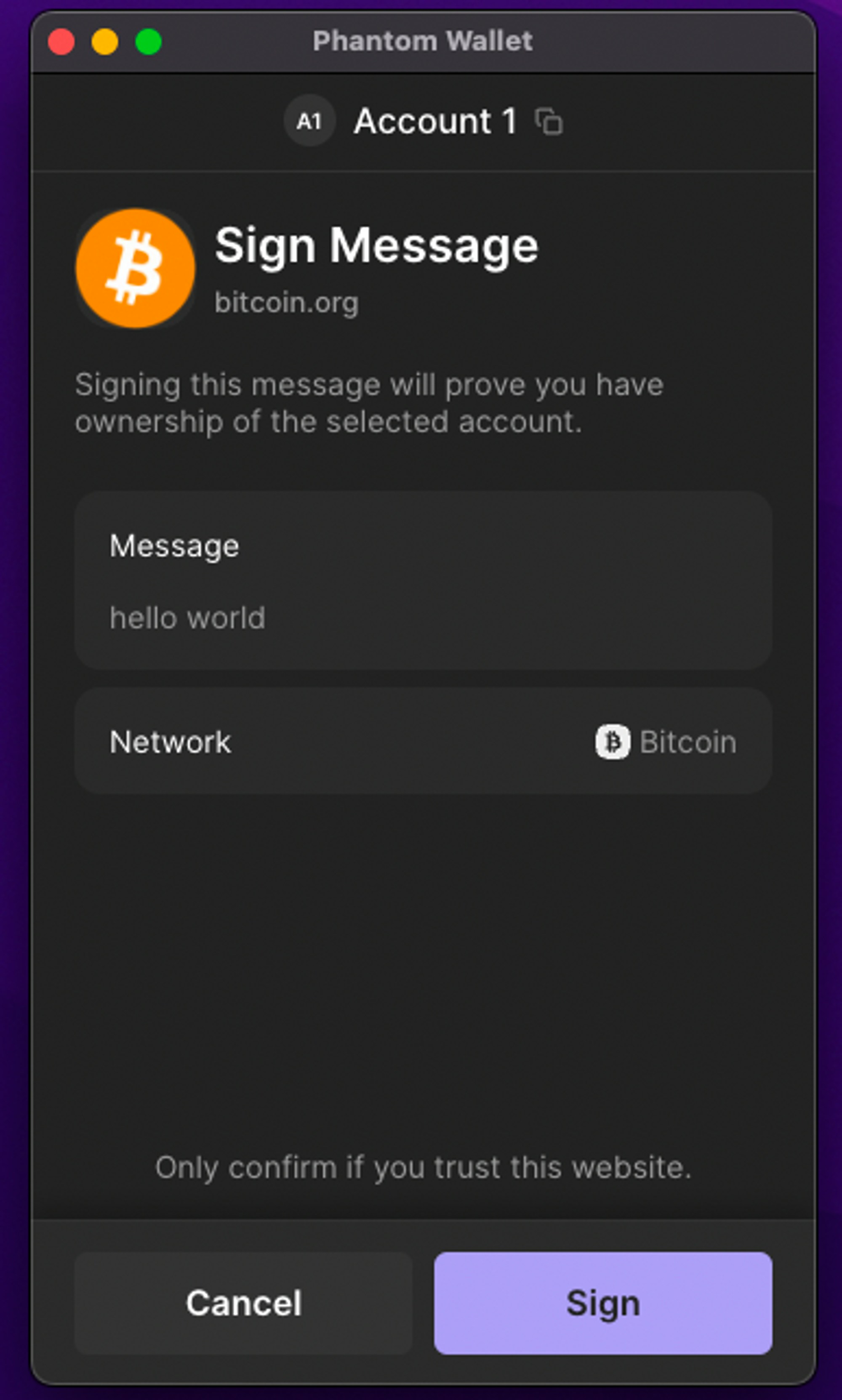
signMessage function accepts two parameters: an encoded message and an address that should be used to sign the message. It returns a Promise that resolves if the user approves the signature request. Once resolved, it contains the resulting signature.